Top 18 Checkmate Patterns: Must-Know Checkmates for Club Players
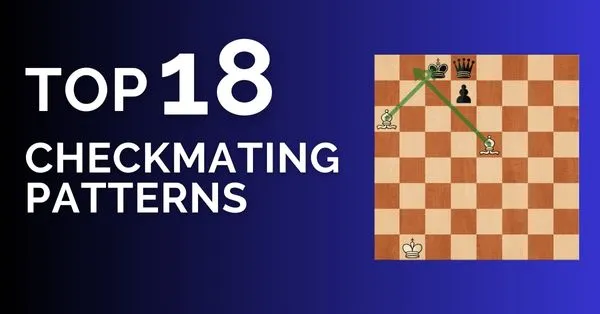
A player learns middlegame and endgame patterns. But it is equally important to learn checkmate patterns as well – especially checkmates for club players. More often than not finishing an attacking game comes down to knowing checkmate patterns. What are the most common patterns you should be aware of and recognize? This post will teach you the top 18 checkmating patterns that any club player should know.
These are the essential checkmate patterns for winning games and improving your tactical skills.
By the end of this article, you will be able to incorporate these checkmating patterns into your games and surprise your opponents with some amazing checkmates.
1. Smothered Mate
The key marker for this pattern is when the enemy king gets suffocated by its pieces, allowing the knight to administer the decisive blow.
The knight’s exceptional ability to leap over other pieces proves ideal for this maneuver.
2. Rook Pawn Knight Mate
This pattern is essential for club players in pawn vs. knight endgames. Knights are notorious for being weak against rook pawns. There are some situations in which the knight can triumph with the help of the king.
White uses the concept of zugzwang to force black into a losing position in this scenario.
3. Diagonal Corridor Mate
Uncontested Bishops on the long diagonal are a force to be reckoned with. Bishops are so powerful that sometimes they can win you the game singlehandedly!
In the first case, the bishop alone checkmate the king. This is a crucial pattern to remember because long-range plays are sometimes overlooked by players.
Knowing this pattern gives you a distinct advantage in your games.
4. Reti Mate
In this enthralling mate, the bishop delivers the final blow, organizing a checkmate with the help of the rook or queen.
The king is on the back rank, The bishop invades the back rank with the support of a major piece and delivers a mate. As other pieces occupy the surrounding squares, there are no escape routes.
This bishop’s variation of the smothered mate, akin to the knight’s classic approach, showcases the inherent geometry of the board and leaves the opponent with no recourse but to concede defeat.
5. Back Rank Mate
When the king cannot escape from the back rank, the rook or Queen can exploit this situation by swinging over to the back rank and delivering mate
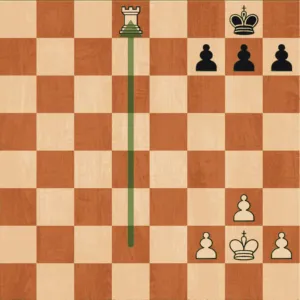
A player should always be alert of a weak back rank and ensure that a piece defends the back rank or create a luft to remove the threat of this omnipresent checkmate pattern.
6. Mayet’s Mate
A novel possibility develops by switching the rook and bishop positions in the Reti Mate. Here, the bishop strategically assists the rook in migrating to the rear rank.
The opponent’s king is stuck, unable to escape due to the blockade formed by its pieces. This checkmate is often achieved with the effective usage of a pin executed by the bishop, giving an element of elegance to this engaging chess technique.
7. Dovetail Mate
The Queen exerts its influence along the diagonal in this mating strategy. Checkmates of this type are common in Queen endgames with pawns on one side of the board. The defender must exercise caution in bringing the king out too early in Queen vs Queen Endgames.
8. Lolli’s Mate
Numerous openings display the fianchetto structure. When the dark-squared bishop changed, a weakness in this setup arises.
The player can skillfully employ pawns to infiltrate the vulnerable squares while taking advantage of this weakness to deliver the powerful Lolli’s Mate.
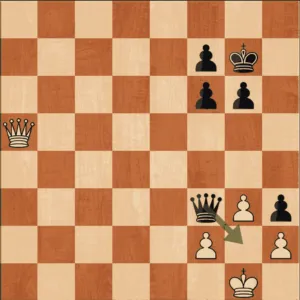
9. Two Knight Mate
Two knights delivering checkmate is a rare scenario on the board. The unique movement of the knight means a checkmate is possible in certain scenarios.
In the following position black sacrifices the queen to bring in the knight.
10. Boden’s Mate
The existence of both bishops and open diagonals enhances the bishop’s long-range abilities.
If the diagonals are facing the king, trouble may arise right away. The Boden’s Mate patterns expand on this concept and employ the destructive force of the two bishops.
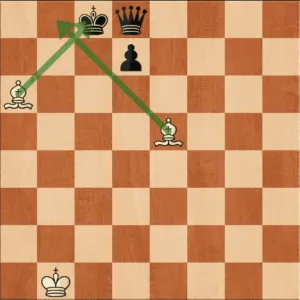
11. Bishop and Knight
Together, the bishop and knight are effective at controlling squares with opposing colors. This is particularly helpful when assaulting the opposing king. You can block the king’s escape squares with the Bishop or Knight.
12. Anastasia Mate
The Knight uses its distinctive movement to control the king’s diagonal escape squares. An illustration of this kind of mate is the well-known Anastasia Mate.
The rook then delivers a mate along the rank or a file. This combination also requires the inaccessibility of the square in front of the king.
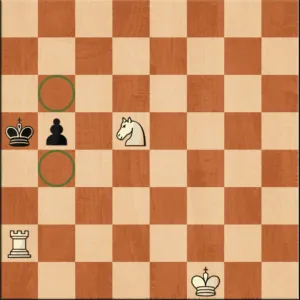
13. Pillsbury Mate
You can use the Rook and Bishop in a variety of checkmate patterns.
The rook uses the blocked king to deliver checkmate along a file in the position after the bishop cuts off the king’s only escape square.
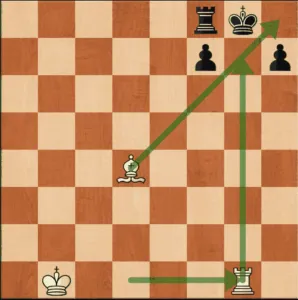
14. Blind Swine Mate
This mate is the epitome of the power of Rooks on the seventh rank. The invading rooks surround the opponent’s king and then move in to deliver the mate.
15. Queen & Knight Mating Pattern
The knight and the queen together form one of the most popular offensive patterns.
The vulnerable f7 and h7 squares versus a castled king are the focus of this strategic placement of the knight.
In the scenario below, White makes room for the queen with a daring move!
16. Balestra Mate
The bishop delivers checkmate along the adjacent diagonal when the Queen assumes the role of one of the bishops.
This mate is very strong because the bishop can invade to inflict a checkmate when the opponent least expects it.
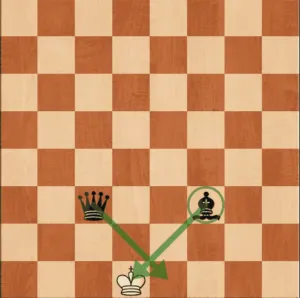
17. Pawn Mate 1
Also capable of mating is a pawn. Getting mate with the weakest piece on the board is a satisfying experience! The pawn lacks the strength to checkmate the opposing king on its own and must use the help of other pieces to hold the opposing king from escaping.
The Paul Morphy study uses pawns to efficiently demonstrate the checkmate pattern.
18. Pawn Mate 2
Pawn mates are generally the result of a King hunt. In this position, the board is full of pieces but the pawn has the final laugh.
FAQ
How many types of checkmates are there?
In Chess, there are several types of checkmates. You can deliver checkmate by individual pieces as well as by combinations of pieces.
What is the rarest type of checkmate?
The rarest type of checkmate is the Two Knights Mate. You will never encounter a Two Knights mate unless it’s in very special circumstances.
What pieces cannot checkmate?
According to the chess rules. A King cannot attack the enemy king. Therefore, a king can’t deliver a checkmate.
What is a false checkmate?
A false checkmate, also known as a “pseudo-checkmate,” occurs when a player makes a move that looks like a checkmate but isn’t valid because the opponent’s king can escape or defend against the threat on the next move.
Can a king checkmate by itself?
No, a king cannot checkmate by itself. In chess, a checkmate occurs when the opponent’s king is under attack (in check) and cannot escape capture on the next move. However, a player’s king cannot deliver checkmate.
You also might want to take a look at 10 Reasons to Learn Advanced Tactics as well as 13 Checkmates You Must Know.





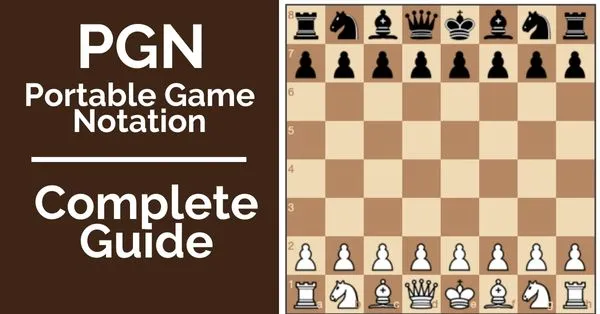




Comments: